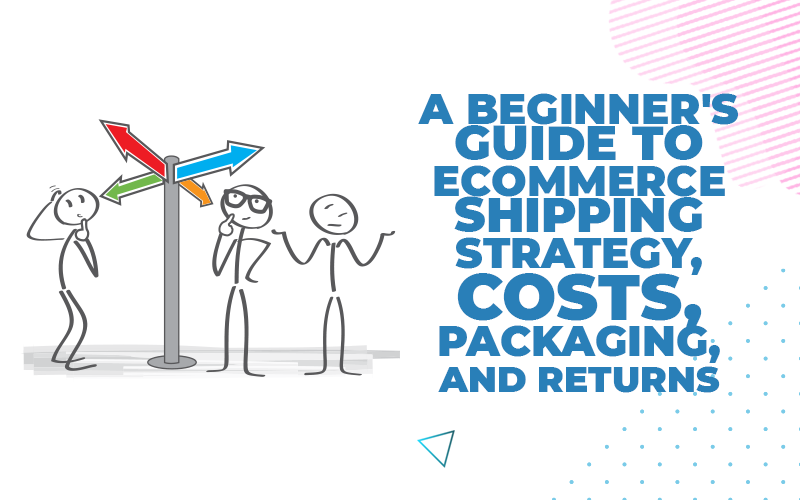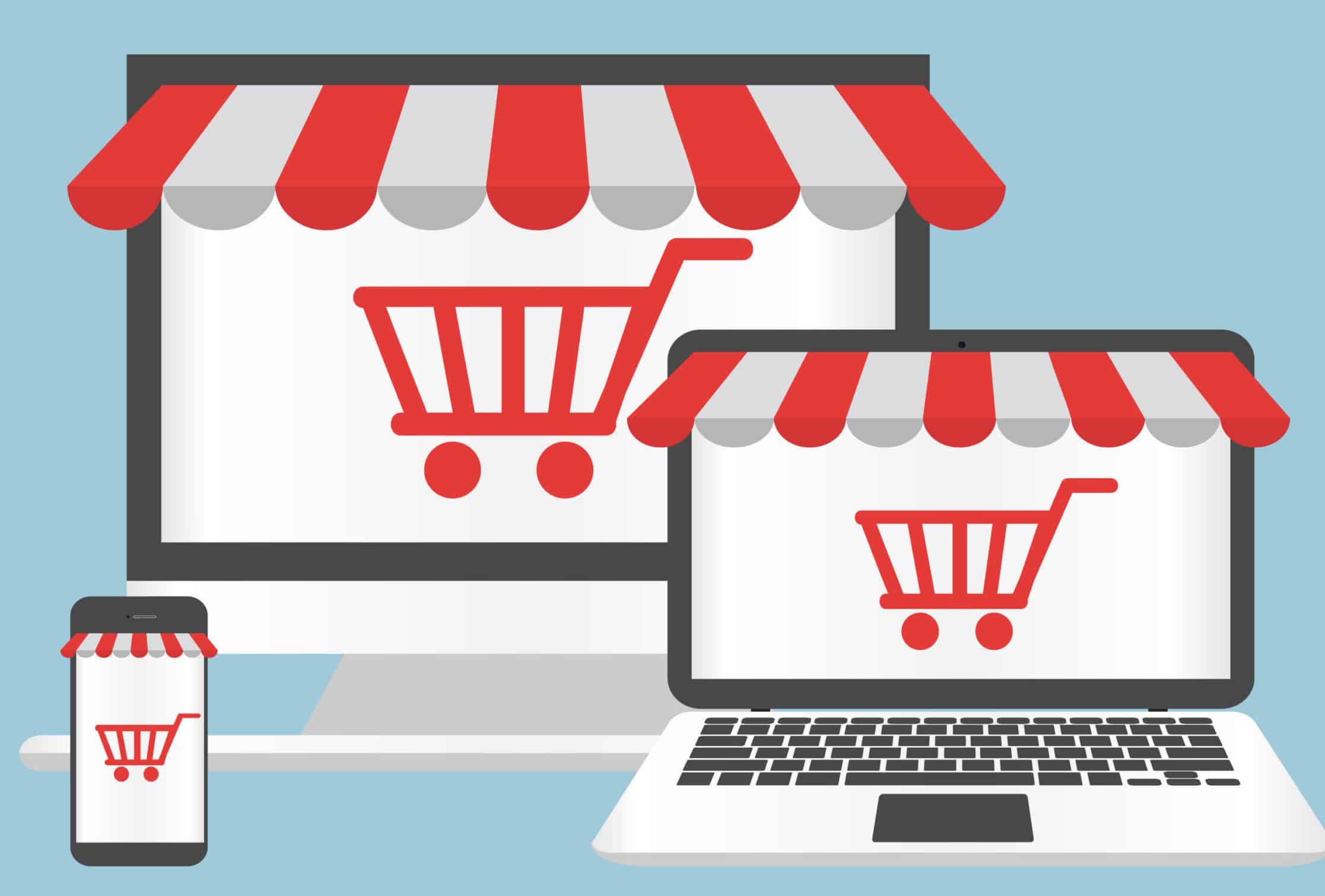There is one thing that every single Ecommerce business has in common, regardless of where it is based and what its industry is. And, this commonality is known as shipping.
Customers need their products, and you need to find out how to give products to them in the most efficient manner possible.
With the rise in logistical providers and huge innovations in the shipping industry, it’s easy to believe that shopping is a simple game. But this is far from the truth. Shipping is not cheap, and often may not even be that fast.
If your customers get the wrong item or receive an item as little as one single day late, expect them to turn to social media and review sites. Reputation is key, and good shipping is integral to a positive online reputation.
With this in mind, it’s important to understand the ins and outs of the shipping industry and how to navigate the waters smoothly.
Remember that efficient shipping is one of the best ways to grow traffic to your ecommerce store.
The Basics of Ecommerce Shipping
The shipping side of Ecommerce is tied to your overall business model, but it is something that needs to be investigated separately. The aims of an ecommerce shipping strategy can include:
- An increase in conversion.
- Differentiation from competitors.
- Expansion of the target market.
- A reduction in shipping costs.
- An improvement of operational efficiency.
Free shipping can be a huge advantage and is a powerful incentive for customers to buy your products. Shipping costs are one of the reasons why shopping cart abandonment rates remain so high. People are led to expect the price to remain stable, but it then increases at the checkout.

Shipping costs still seem to many consumers like an ‘extra’ fee that they should not have to pay. With Amazon Prime offering ‘free’ next day delivery (after paying for a yearly membership), customers are getting used to the idea of low cost and speedy delivery.
The following are some of the more telling eCommerce statistics that will give you an idea of consumer preferences with regard to Ecommerce shipping:
- 38% of customers won’t shop with a retailer again after going through a negative shipping experience.
- 60% of customers will choose a competitor that has more convenient options on display.
- 93% of customers indicate that shipping is an important part of the online shopping experience.
- 88% of customers would prefer free 5-7 day delivery in comparison to paying a small fee for 1-2 day delivery.
How Does Ecommerce Shipping Work?
With the majority of Ecommerce models, what happens is that a business person creates an online storefront to market goods. When a customer purchases goods from the online storefront, the order is fulfilled by a third-party provider.
It’s not feasible for an online business to have their own order fulfillment service, unless they are local. Even so, this is unlikely. A primary advantage of online storefronts is that you don’t have to take care of the shipping and order fulfillment side of things.
But choosing the right provider and getting the price and options right can get very complex. There are many providers and rates to be compared. You also need to consider how the goods are branded, if you are creating your own brand by improving on other people’s products.
Remember, that there is no way to cut shipping costs down to zero. It takes time, petrol, and human focus to get material items from A to B.
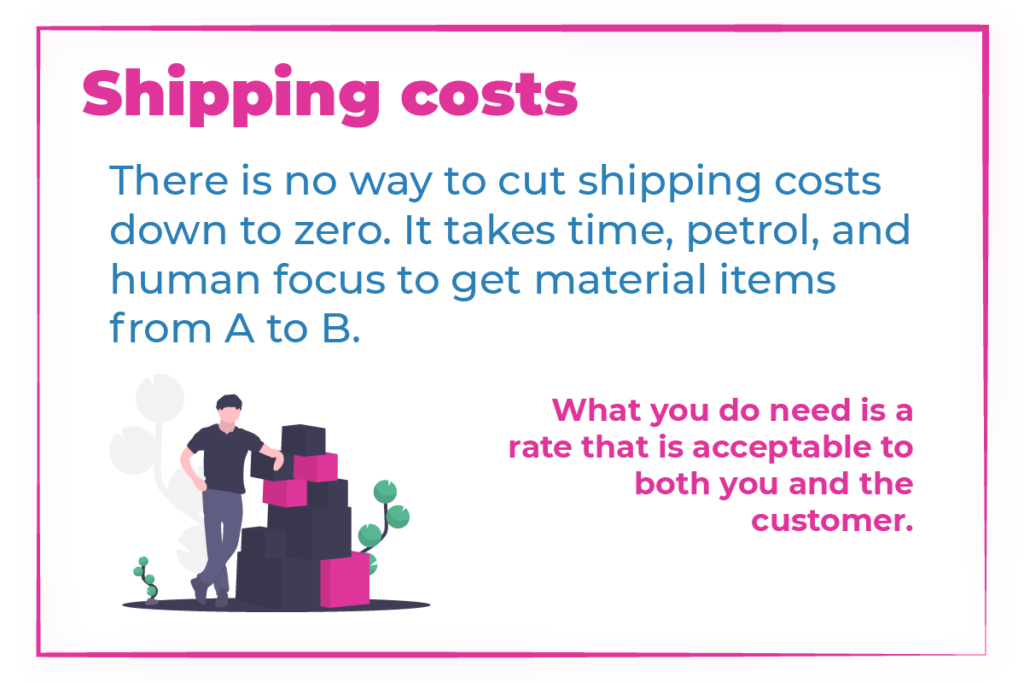
What you do need is a rate that is acceptable to both you and the customer.
Most customers don’t mind paying a small amount for shipping, such as $5 for a $100 order. What they hate is paying $15 for a $100 order that takes 7 business days for delivery. A balance has to be found. For this, you need to ‘know thy audience’ and present them with the options they are looking for.
Below, we’ll take a look at some of the major shipping options and how to decide on the right approach to take with Ecommerce shipping, packaging, and returns.
You might also be interested in knowing the best and innovative marketing strategies.
3 Foundational Shipping Factors to Take Into Account
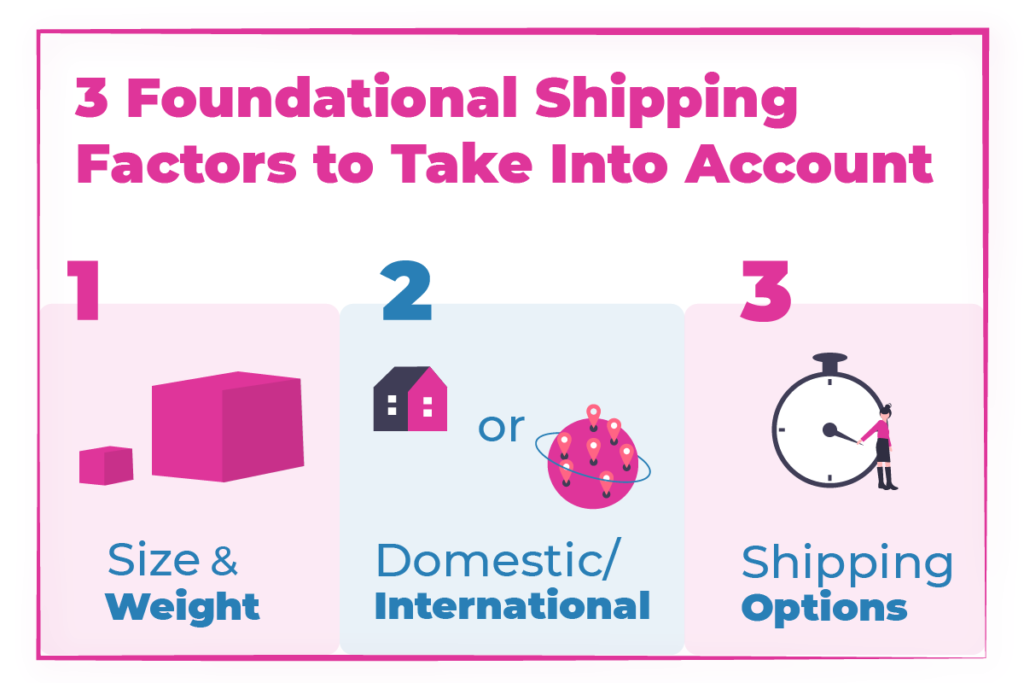
Before you embark on your shipping strategy, there are 3 primary areas that you need to take into consideration. These factors will determine how you approach your shipping strategy, how much it costs, how quick it is, and the level of satisfaction offered to customers.
When you are just starting out, it’s better to start small and local, and expand as time goes by. If you overextend yourself, it could result in disaster. The alternative is to do a lot of research and experimentation so you can provide the best shipping experience to a large customer base with a variety of options.
#1 – Size and Weight
If you sell only one product that is a similar size and weight (such as health supplements) then your shipping strategy will be a lot easier to get your head around. You can take a zone-based approach with a uniform price regardless of weight.
The reason this would work is because even if a customer ordered 10 units of Vitamin C tablets (or similar), the shipping weight/size would not increase significantly, but your product margins would increase dramatically (unless you are running your business at a loss).
This also makes it easier to run promotions, with a flat rate per zone or free shipping on bulk orders. If the size and weight are not uniform, then it might be a better idea to use a bulk carrier who can take this into account. To make this work, you will need to ensure that the weight and dimensions submitted to the carrier are correct.
#2 – Domestic or International
It’s far easier to ship to your domestic country when starting out. This is because rates can vary greatly from country to country, with additional duties and charges. It can also increase the chances of lost or damaged packages, depending on the carrier.
This increases the chances of an unhappy customer base and a loss of income for replacements and returns. It is usually best to charge cheaper rates from your area and to increase rates the further out the order is.
If you live near a border or you expect to have a large customer base in a different country, then you will likely have to use an international carrier to streamline operations. Building your own rates can be tricky and will require a lot of thought. It’s best to keep it simple when starting out.
#3 – Shipping Options
What kind of options would you like to deliver to customers? In the modern era, it’s possible to offer same-day, next day, and 2-day delivery, along with standard delivery times (typically 5-7 business days for domestic orders).
The advantage is that the customer gets to select the best option depending on his/her unique perspective. You can never really know what the customer wants 100% of the time, which is why presenting them with options is a great way to keep clients satisfied.
In some industries, you will need to provide speedy delivery, as people are unwilling to wait. For a $100 Manuka Yoga mat, people will be willing to wait a couple of weeks. For a common health supplement, people might want it within a couple of days. Take your target market into account when determining your shipping options.
Paid Shipping Models
Aside from the free shipping model which is explored below, there are 4 primary shipping models that you can use when starting out your Ecommerce campaign.
What shipping model works for you will depend on the products you are selling and what your target market is expecting in terms of speed, options (tracking, insurance, etc) and price.

Flat Rate Shipping
Flat rate shipping is where you have a product line that is largely the same weight and dimensions. When you have a variety of products with little similarities, then flat rate shipping becomes less and less appealing. An example of flat rate shipping might be $10 on all orders in the USA, regardless of order value.
You’ll still need to work out whether or not this is a match for you, based on the average order size. You don’t want to make a loss on shipping. However, this could be a good option for those starting out who are unsure of what to charge. You might lose a little on shipping but not enough to cause a devastating effect. With more time and more data, you can then refine your shipping model to match the in-coming orders.
Table Rate Shipping
With table rate shipping, the price increases the further the customer is from the order fulfillment center. If you have a fulfillment center in Boston, the price might be $5 for people in the city, $10 for people in the state, and $15 for states further out.
Another type of table rate shipping is dependent on the order value. You might charge $7.99 for orders up to $50, $9.99 for orders between $50 and $100, and $12.99 for orders above this. You can also mix and match table rates, though it could get a little complex.
There are many permutations on table rate shipping. You could charge different shipping costs for specific products. If you are selling expensive jewelry, charging by weight will not be the best option.
Real-Time Carrier Shipping
Many Ecommerce platforms integrate with international carriers like USPS, DHL, Australia Post, and Canada Post to give real-time shipping prices. This dynamic pricing model is best for a product line that has little similarities in terms of weight and dimensions.
There is little room for promotions with real-time rates. The prices will vary depending on the weight, size, and the distance to the fulfillment center. On the other hand, this is an excellent way to break even on shipping in the most direct manner. The customer pays the exact price for order fulfillment.
You may also discount on this price to gain an edge on the competition or increase the cost to cover packaging and other items. This is a stressless way to go about shipping.
Local Delivery
This is perfect for new entrepreneurs who are not looking to take over the globe with a giant and diverse storefront. It’s perfectly reasonable to make a profit with a localized model and a small (but high-quality) product range.
The local delivery model has many benefits. It tends to be more flexible as you can easily customize the delivery area. The delivery is often a lot faster. The shipping price can be vastly reduced – you may even be able to hire a driver yourself, depending on how ‘local’ you want to get. As an added benefit, you can build up a reputation with repeat customers.
Should I Offer Free Shipping?

Free shipping is a major incentive to get customers to buy your products and services. As mentioned previously, it’s a great way to reduce shopping cart abandonment. Of course, ‘free’ shipping means it is only free for the customer. Somebody is going to eat this cost. But you do have a number of options to get it to work for you.
- Customer Pays – Increase the prices of the products to offset the cost of shipping.
- You Pay – Take the price of shipping out of your total sales and bite the bullet.
- You & Customer Pay – Increase the price of products slightly so that both you and the customer pay for the shipping.
- Minimum Order – Free shipping on a minimum order size to increase your sales. This can be paired with other options above.
If you do decide to go with free shipping, you will increase your conversion rates. However, make sure that you can cover the cost if you go down this route.
Shipping is a huge expense for Ecommerce retailers.
It could put you into the red if you are not careful. Most companies, including Amazon (the king of logistics and shipping), only offer free shipping above a minimum order amount.
The bottom line is to only offer free shipping on offers where you can afford to. You need to make the sale and still make a reasonable profit. Don’t start off offering free shipping by default because it’s the ‘right’ thing to do. It’s only the right thing to do if you make a profit doing it!
The bottom line is that free shipping is hard. You might need a big budget to make it work. It’s often best to make it appear free by upping the price of goods while offering free shipping on certain orders only.
Saving on Shipping
There are many ways to save on shipping. As mentioned above, you are going to need to pay something, unless you are offloading costs on customers. Which will inevitably mean you sell fewer goods, so you really do pay when you make customers pay, in a sense. Still, building shipping into the products is a direct way to save on shipping and leave the customer with a sense that he or she is getting ‘free’ shipping.
Another option would be to reuse the boxes that goods come to you in as a business owner (provided you run a business).
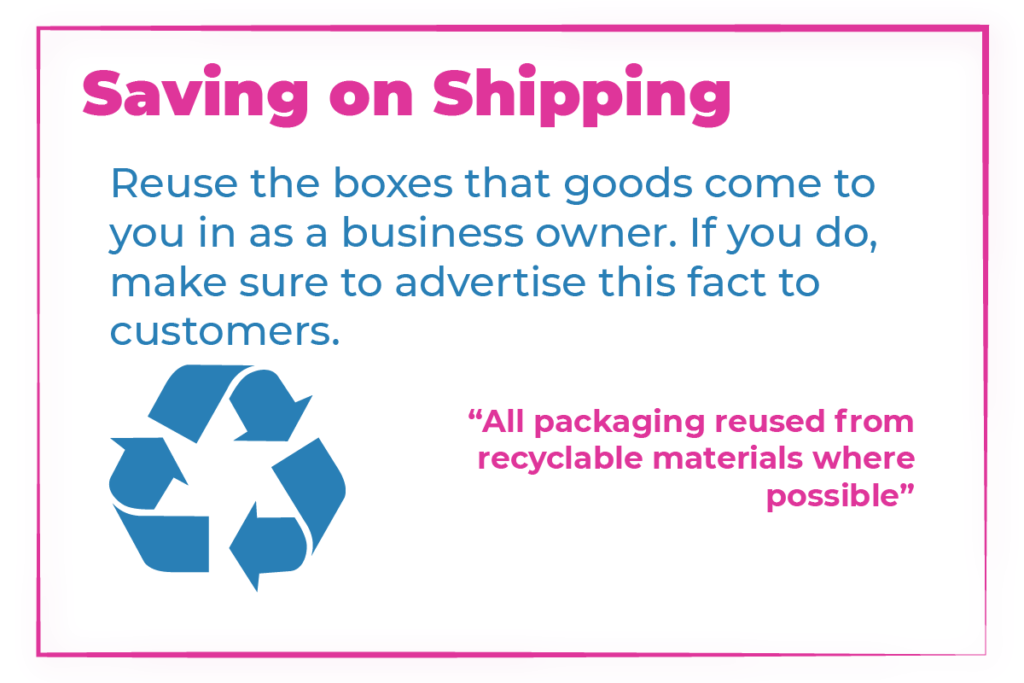
If you do, make sure to advertise this fact to customers – ‘All packaging reused from recyclable materials where possible’. Of course, this is only possible when you are completing fulfillment yourself, as few Ecommerce owners will be.
The best way to save on shipping is simply to do your research and get your packaging, weight, and dimensions correct. Think about how you can get creative with packaging so that costs are lowest while the appeal is highest.
You could also avail of flat rate shipping. As long as your package is below a certain weight, you qualify for a flat rate anywhere in your country of origin with larger delivery services. This can be useful if you have a lot of orders and no way of knowing what customers are going to buy. The products will have to fit in one of the standard flat rate boxes supplied by the carrier. Make sure you choose a reliable supplier for your ecommerce business.
Many large companies offer this flat rate option, as the costs are low while the delivery speeds are often high. It’s a win-win for all parties and a great place to start off while you find your feet.
Another thing to keep in mind is that you don’t have to use boxes. Delivery services have no problem using poly mailers. These are light and durable, perfect if you are selling clothes or small items. These are even offered for free with some providers. In sum, the primary ways to save on shipping will include:
- Increasing the cost of goods to offset shipping.
- Using a flat rate shipping model.
- Offer the customer in-store pickup.
- Getting creative with shipping and packaging.
- Do the research and compare the best available options.
Packaging
Gone are the days when you can deliver a product to a customer in a plain brown box. You are selling not just a product but an entire experience. You need to dazzle customers with impressive packaging. Items need to be well presented, neatly wrapped, and secured with bubble wrap where appropriate.
Some businesses make a point of distinguishing themselves with their packaging. And it really works. A letter that appears to be personally crafted using calligraphy with a love heart and a ‘Thank you for buying our product {name}’ is an awesome way to build a personal relationship with your customers.
The online world is extremely hyped with the concept of a ‘personalized’ customer experience, but usually in a digital format. Think outside the box when it comes to your packaging and marketing. The personal letter is a great (and cheap) way to build positive relationships, create a strong online review profile, and entice repeat customers. You can even build your entire business model with an emphasis on a strong customer experience with excellent packaging.
Of course, you still want to pay attention to the basics. The package needs to be small, light, and as compact as possible while still being secure. Don’t have a giant box full of foil/wrapping to secure a single item. Small, sweet, and compact is the name of the game when it comes to packaging.
Get creative with your packaging. There are a plethora of options and all major suppliers offer many choices in this regard. Large packaging suppliers include Value Mailer and Fast-Pack, as the costs will be lower with these companies.
Returns
With Ecommerce returns, the principle is simple. If you accept returns promptly, then the customer will return to your business. If you don’t the customer will never do business with you again. In other words, how you handle returns is a make or break component of repeat customers.
95% of customers will purchase again from a retailer that has a smooth return experience. While few (if any) will do business with a company that defaults on their promises. But the beauty is that you can turn a negative experience into a positive one.
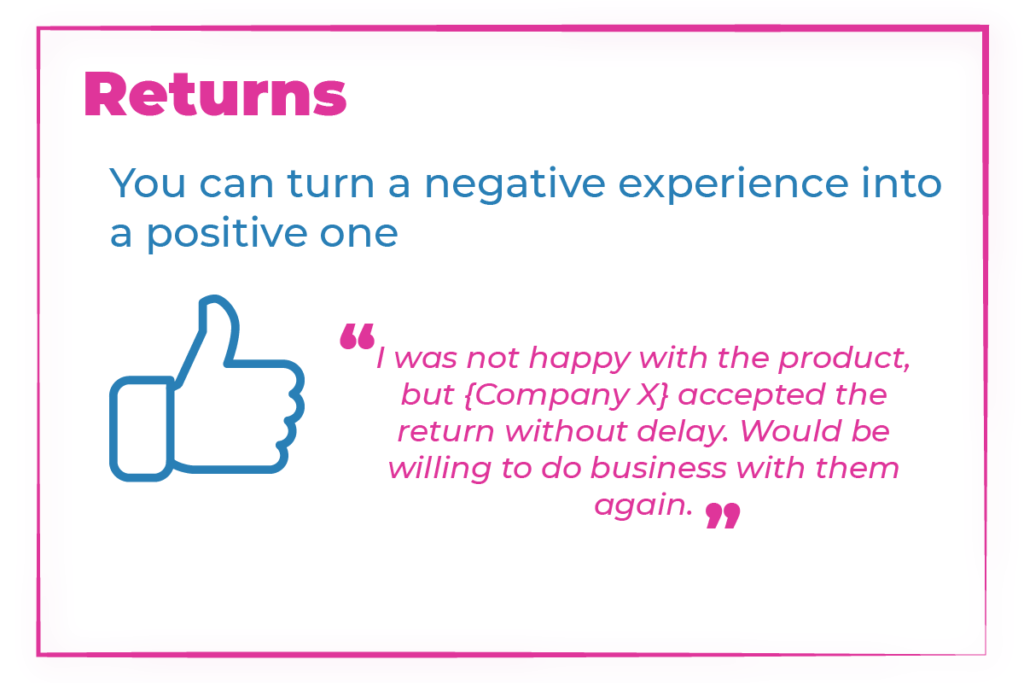
A customer that is not satisfied with a product gets refunded. Instead of a negative review of one-star, you will now get a review of 4 or 5 stars indicating something along the lines of :
‘I was not happy with the product, but {Company X} accepted the return without delay. Would be willing to do business with them again’.
Have a strong returns policy.
Have a strong returns policy that is clearly displayed on your Ecommerce website. In fact, many retailers have found that even when offering a no-hassle 30 day return trial, only a few customers actually go to the length of returning the product. But having the generous returns policy can vastly increase conversion, as it entices people to make a purchase.
They have the safety of knowing they can simply return the item, but are often not inclined to go to the hassle of returning it when the time comes. Make sure your returns policy is clearly displayed and easy to execute. Do not use jargon and small print. Offer an excellent return policy and deliver on it.
Put a time limit on the return policy (30-90 days most often) and indicate whether or not the return shipping is free. Generally, if the initial shipping is free, the return shipping should also be free as well.
Remember, if you have a large number of returns and this is costing you, this is not a logistical problem. Cut costs by improving the quality of your product so customers are not returning your items en mass, not by passing shipping costs to customers for faulty goods.
Calculating Shipping Costs
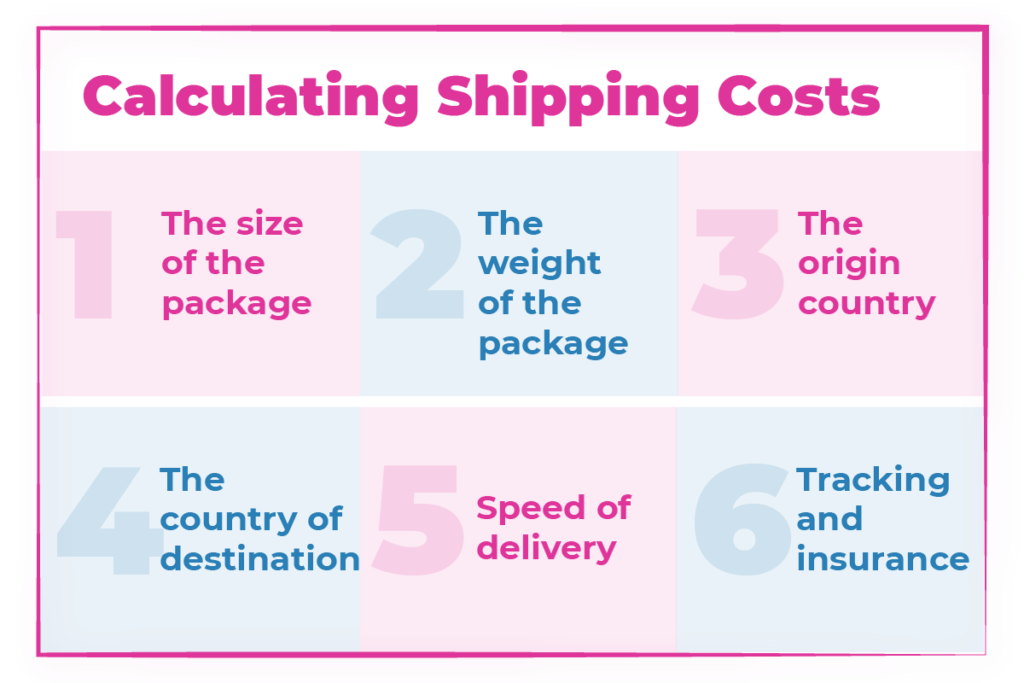
Regardless of the shipping provider you are using, there are 6 primary factors that will go into the overall cost. These are:
- The size of the package.
- The weight of the package.
- The origin country.
- The country of destination.
- Speed of delivery.
- Tracking and insurance (if relevant).
Each shipping provider will have different options for delivery, so it can be a little tricky comparing them all. Here are links to the major international carriers to give you an idea:
- Shipping Calculator for USPS
- Shipping Calculator for Canada Post
- UK Royal Mail Shipping Calculator
- Shipping Calculator for Australia Post
- Shipping Calculator for UPS
- Fedex Shipping Calculator
When starting out, it might be hard to get an exact figure on profit margins (you won’t have a large dataset and don’t know what customers prefer to buy). But you can definitely work out estimates that are reasonably accurate.
Make a spreadsheet and take into account the cost of packaging the product, the cost of shipping per order, custom duties, credit card fees, along with the cost of the product. This will give you a rough idea of how much profit you are making on each sale. And will also help you to decide whether it’s worth offering free shipping.
Alternative Shipping Strategies
Because this is only a beginner’s guide to Ecommerce shipping, we won’t go into some of the advanced strategies in too much detail. But it’s worth mentioning that there is infinite room for creativity within the Ecommerce shipping space. You can mix and match many different strategies, tweaking as you go to see which one is the best fit.
For instance, you might want to offer free standard ecommerce shipping for those who don’t care when they get the product, alongside expedited shipping for those who really want their items quickly. With customized and unusual options, you can stand out from the crowd.
You can also use it to test what customers really want. By offering in-store pick up, you may be able to upsell customers or, at the very least, increase brand awareness and impress them with your level of customer care. If you are selling large orders, LTL freight delivery is a must to keep costs down. You may want to use multiple carriers, depending on the orders.
Regardless, you need to present customers with a number of options so they can select the right one for them. At the end of the day, you have no way of really knowing what the customers want, so leave the decisions to them.
Getting Started
Strong shipping is critical to long-term Ecommerce success and customer satisfaction. Make sure that:
- You know your shipping costs and overall profit margins.
- Your merchandise is perfectly packaged and personalized as much as possible.
- You present your customers with at least 3 shipping options.
If you want to use an Ecommerce platform that will set you up for success, consider Dashnex. The store is designed with operational efficiency in mind and is currently offering a one time offer for new users.
Your Ecommerce store will be up and running before you know it. Order fulfillment, delivery, and returns are streamlined using integrated third-party services, so you don’t have to waste any time on shipping strategy.
